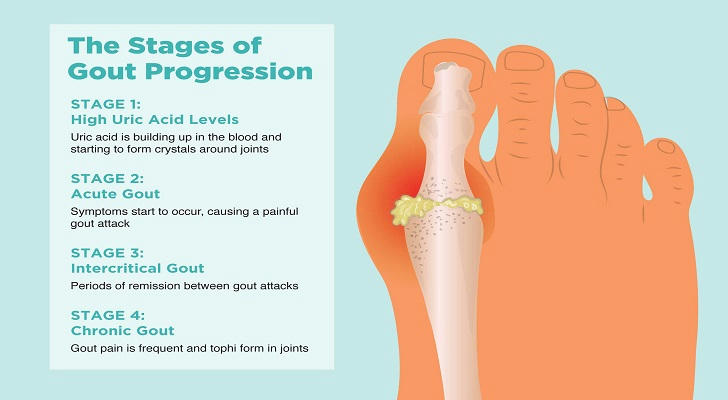The Dangers of Gout: It's Not Just About Joint Pain
In the United States, gout is no longer a common disease among the elderly; it is increasingly affecting younger individuals. Due to high treatment costs and a high recurrence rate, it has become a “chronic burden.” According to statistics, gout treatment costs in the U.S. can reach thousands of dollars annually, and many patients rely on medication for long-term management. Whether you are experiencing acute joint swelling or are troubled by high uric acid levels, understanding gout treatment and reliable gout specialists will be key first steps to improving your condition and reducing expenses.

I. Destructive Damage to the Joint System
Chronic Gouty Arthritis:
- Among untreated patients, 62% will develop chronic arthritis within 10 years.
- Repeated joint inflammation leads to permanent damage.
- Ultimately, this may result in loss of mobility and the need for joint replacement.
Formation of Tophi:
- About 30% of long-term patients will develop tophi.
- Commonly found in fingers, elbows, and the ear.
- This may cause joint deformities and loss of function.
II. Severe Damage to the Kidney System
Uric Acid Kidney Stones:
- Gout patients have a threefold risk of kidney stones compared to the general population.
- Approximately 20% of patients may develop kidney stones.
- This can lead to renal colic and urinary obstruction.
Gouty Nephropathy:
- Long-term high uric acid levels damage renal tubular function.
- This can lead to chronic renal insufficiency.
- In severe cases, it may progress to uremia.
III. Potential Threats to the Cardiovascular System
Increased Risk of Hypertension:
- For every 1 mg/dL increase in blood uric acid, the risk of hypertension increases by 13%.
- About 75% of gout patients also have hypertension.
Elevated Risk of Coronary Heart Disease:
- Gout patients have a 1.5 times higher risk of heart attacks.
- Uric acid crystals may directly damage the vascular endothelium.
Increased Stroke Risk:
- Gout patients have a 1.3 times higher likelihood of stroke.
- This is related to inflammatory responses and vascular damage.
IV. The Malignant Cycle of Metabolic Syndrome
Mutual Promotion with Diabetes:
- Gout patients have a 70% increased risk of diabetes.
- High blood sugar levels can worsen uric acid excretion problems.
Cumulative Effect of Obesity:
- Obese individuals have a threefold increased risk of gout compared to those with normal weight.
- Adipose tissue promotes uric acid production.
Association with Dyslipidemia:
- About 80% of gout patients have hyperlipidemia.
- This creates a malignant cycle of metabolic disorders.
V. Overall Decline in Quality of Life
Pain from Acute Attacks:
- The pain index is comparable to that of kidney stones and childbirth.
- On average, patients experience 3-4 attacks per year, each lasting 1-2 weeks.
Long-term Medication Burden:
- Patients often need to take uric acid-lowering medications for life.
- Some medications may adversely affect liver and kidney function.
Psychosocial Barriers:
- 37% of patients experience anxiety or depression.
- Pain and dietary restrictions can impact social life.
VI. Economic Burden Cannot Be Ignored
- Each gout patient incurs an average annual medical expense increase of $3,000-$5,000.
- Pain-related work absenteeism averages 15 days per year.
- Severe cases may lead to long-term disability.
Important Note: Most of these dangers can be avoided through early diagnosis and standardized treatment. After a gout diagnosis, adhering to uric acid-lowering treatment and lifestyle management can significantly reduce the risk of complications. It is recommended that gout patients have their blood uric acid levels and kidney function checked at least every 3-6 months.